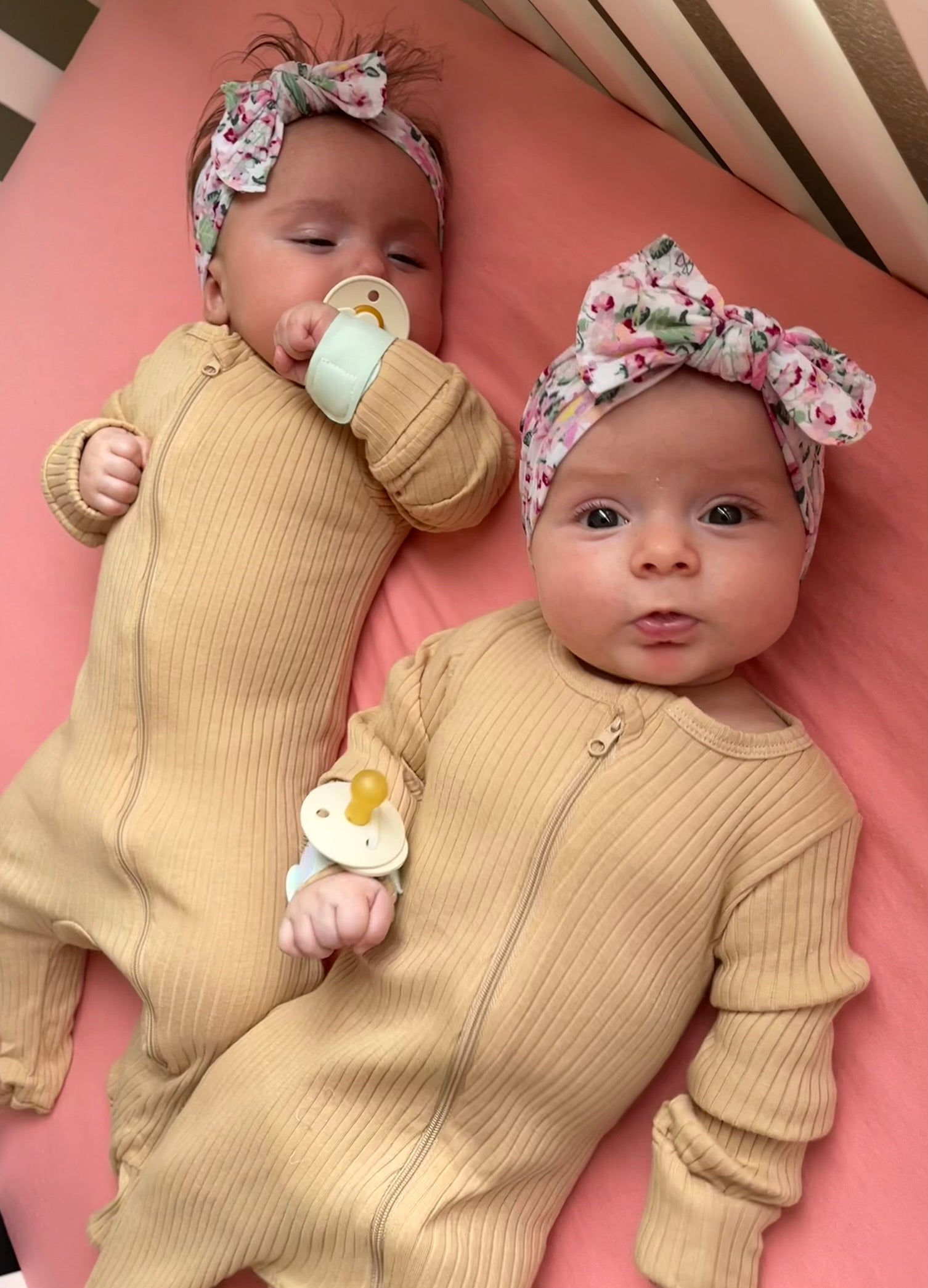
How to Safely Introduce a Pacifier to Your Newborn
If you are wanting a pacifier accessory to keep your baby’s pacifier close by at all times, but also isn't a safety hazard, I recommend the Ingy Bingy Band.
How to Safely Introduce a Pacifier to Your Newborn
Pacifiers can be a lifesaver for many parents, offering a way to soothe a fussy baby and provide comfort. However, introducing a pacifier to your newborn requires care and thought to ensure it’s done safely and effectively. Whether you’re a first-time parent or simply looking for a refresher, here’s everything you need to know about safely introducing a pacifier to your baby.
Wait Until Breastfeeding Is Established
If you’re breastfeeding, it’s important to wait until breastfeeding is well-established before introducing a pacifier. This typically takes about 3 to 4 weeks. Early introduction of a pacifier can sometimes cause “nipple confusion,” where your baby may struggle to latch correctly or prefer the pacifier over the breast. Once your baby is nursing well and gaining weight appropriately, it’s generally safe to offer a pacifier.
Choose the Right Pacifier
Not all pacifiers are created equal. Look for one that is age-appropriate and orthodontic to support healthy oral development. Many pacifiers are labeled by age (e.g., 0-3 months), so be sure to select one designed specifically for newborns. Silicone pacifiers are durable and easy to clean, making them a popular choice for parents.
Start at the Right Time
The best time to introduce a pacifier is when your baby is calm and not overly hungry. If your baby is already upset or crying, they may reject the pacifier initially. Offer it gently during a peaceful moment, like after feeding or during a quiet cuddle session.
Keep It Clean
Newborns are especially vulnerable to germs, so maintaining proper pacifier hygiene is crucial. Sterilize the pacifier before first use by boiling it for 5 minutes or using a sterilizer. Afterward, clean it regularly with warm, soapy water or run it through the dishwasher if it’s dishwasher-safe. Always check the pacifier for cracks or wear and replace it as needed.
Don’t Force It
Some babies take to a pacifier immediately, while others may be more reluctant. If your baby isn’t interested, don’t force it. You can try again later or experiment with different pacifier shapes or brands to see if one suits your baby better.
Use It for Soothing, Not Replacing Feeds
Pacifiers are a great tool for soothing, but they shouldn’t be used to delay or replace feedings. Always offer a feeding first if your baby is showing hunger cues, and use the pacifier as a secondary source of comfort.
Follow Safe Sleep Guidelines
The American Academy of Pediatrics (AAP) recommends offering a pacifier at nap time and bedtime to help reduce the risk of Sudden Infant Death Syndrome (SIDS). However, don’t attach the pacifier to your baby’s clothing with a clip or string while sleeping, as this can pose a strangulation hazard.
Monitor Usage
As your baby grows, monitor how and when they use the pacifier. Limit pacifier use to sleep and soothing times, especially as they approach the toddler stage.
Pacifier Accessory
You will also want to make sure you are using a pacifier accessory that is safe for your baby as well. Pacifier clips can be choking and strangulation hazards. Wubbanubs can be suffocation hazards as well. If you are wanting a pacifier accessory to keep your baby’s pacifier close by at all times, but also isn't a safety hazard, I recommend the Ingy Bingy Band.
The Ingy Bingy Band is a pacifier wristband that works with any type of newborn pacifier. Infant pacifiers easily attach and detach to the pacifier wristband! This pacifier wristband velcros around baby’s wrist to help them self-soothe from as early as 4 months! This pacifier bracelet saves you time and frustration because you won’t be constantly looking for it and cleaning it when the newborn pacifier keeps falling out!
Introducing a pacifier to your newborn can be a wonderful tool to comfort and calm them, but it’s essential to do so safely. By following these guidelines, you can ensure your baby’s health and happiness while giving yourself a bit of peace of mind.

